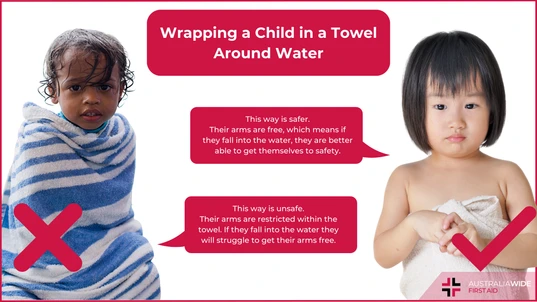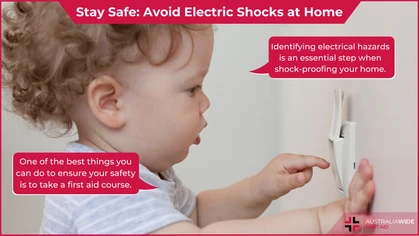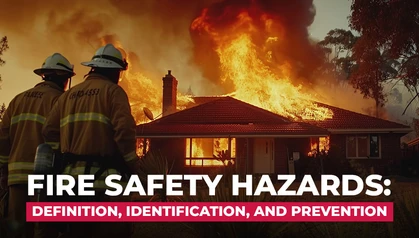Towel Mistake That Could Cause Drowning

Danger

A common mistake is wrapping a child in a towel with their arms restrained.
With the weather warming up, many people are heading back to the water. Whether it’s your backyard pool, a public pool, lake, river, or ocean, swimming is a fantastic form of relaxation, play, and exercise. There is, however, one common thing that many people do which is putting your child’s life in danger.Unsafe Towel Wrapping
When your child hops out of the water, often our first instinct is to wrap a towel around their shoulders. This is of course to help them dry and keep them warm. In doing so, the child’s life is in danger. If the child were to fall in the water while their arms were wrapped underneath a towel, their risk of drowning significantly increases. The wet towel will restrict the movement of their arms and likely get in their face, restricting their vision. Their first instinct will be to try and wriggle out of the towel. But because of the weight of the fabric, and depending how tightly wrapped they are, this could prove difficult if not impossible. In the precious moments it could take to untangle themselves, they will sink further into the water. If they are unable to remove the towel from their arms, they are likely to panic. Panicking, sinking deeper into the water, and not having free use of their arms is a recipe for tragedy.
Safe Towel Wrapping
Rather than wrapping a towel around a child’s shoulders, there is a much safer option. First, dry their arms and shoulders thoroughly. Dry their hair and face as well, especially if dripping hair is likely to cause upset. Then, wrap the towel around their body underneath their arms. You could tuck it in to keep it in place, or they can hold it in place themselves. By wrapping it in this way, they will still have free use of their arms to get themselves back to the surface if they did fall into the water.The Tragic Statistics
The Royal Life Saving Summer Drowning Report has highlighted how significant the drowning death toll is. Between 1 December 2022 and 28 February 2023, 90 people died as a result of drowning. 54 of those occurred in coastal areas, with over 6,000 rescues by surf lifesaving personnel occurring. 9 of those 90 deaths were the result of a rescue attempt gone wrong. Every year, an average of 274 people fatally drown, and a further 555 experience non-fatal drowning requiring hospitalisation. The number of non-hospitalisations for drowning incidences is unrecorded, as the majority are not reported. According to the 10-year analysis of drowning in children 5-14 years in Australia, 14 children fatally drowned as a result of a fall into water. That is 14 children too many.What is Drowning?
Drowning occurs when water enters the respiratory system through the nose and mouth. When the water then enters the lungs, it stops the exchange of oxygen into your blood stream. Without this exchange of oxygen, your brain will quickly slip into unconsciousness. Starved of oxygen, your body will begin to shut down, and brain damage will occur. Drowning can occur in as little as a few seconds, and can progress to fatal drowning within minutes.What Does Drowning Look Like?
Drowning is a silent killer. It is very unlikely that a person who is drowning will thrash around yelling, as they do on screen. Far more likely they will be so focussed on their own survival that they will not be able to voice a sound – this is known as the Instinctive Drowning Response. Movements such as waving, while logical, may not come to mind if a person is drowning. If a person is drowning, there will likely be a short struggle with the water followed by:- Head low in the water, tilted back with the mouth at water level
- Body in a vertical position, meaning they are upright in the water, likely facing toward land or safety
- ‘Ladder climbing’ motion of arms and legs
- Eye glassy or closed
- Gasping or hyperventilating
How to Reduce the Risk of Drowning in Children
There are a number of ways you can help keep children safe in, on, and around water:- Constant, active supervision
- Avoiding swimming or water activities with few people, or alone
- Swimming in patrolled areas
- Following all official advice when swimming in public areas
- Completing learn-to-swim classes, for both you and your child
- Learning first aid and in particular CPR
- Earning yourself a Bronze Medallion from Surf Life Saving classes
- Dressing your child in high visibility colours such as neon yellow, neon green, and neon orange
- Supplying your child with towels in high visibility colours
- Wrapping your child safely with their towel before and/or after swimming (around their body, with their arms free)
- Learning the signs of drowning
- Teaching and reinforcing water safety
First Aid
Water safety is a concept that should never be overlooked, no matter how comfortable or confident you or your child feel. Many factors can influence the likelihood of accidental drowning occurring. Ensuring you know how to safely wrap a towel around your child reduces one of them. Having up-to-date First Aid and CPR skills and knowledge is another – one that can save lives should you come across a drowning person. We have CPR and First Aid courses available in over 75 locations Australia-wide – find one close to you when it’s time to upskill!
Originally published at
https://www.australiawidefirstaid.com.au/resources/towel-mistake-that-could-cause-drowning
as part of the Australia Wide First Aid Articles Library









